This is a guest post in our series looking at the future of 3D Printing. To celebrate 5 years of reporting on the 3D printing industry, we’ve invited industry leaders and 3D printing experts to give us their perspective and predictions for the next 5 years and insight into trends in additive manufacturing.
Alex Dick is a partner at Protoplant, the makers of Proto-pasta. Based in Vancouver, Washington, Proto-pasta was born on Kickstarter. The 3D printing filament company say they owe their, “success to the many communities of makers and 3D Printing enthusiasts from around the world who believe in what we we are doing.”
3D Printing: The Next 5 Years – More Materials, More Finishes, More Uses by Alex Dick
Looking back 5 years, I was elbows deep in laser sintering powder, wrapping up nearly 10 years of focusing on $100k-$1m+ Industrial 3D Printing Machinery. With a degree in mechanical engineering, my additive education came from working for Electro-optical Systems (EOS). As an application engineer, bridging the gap between sales and service with an education twist, I learned about the business of making and found my passion for process, people, and materials.
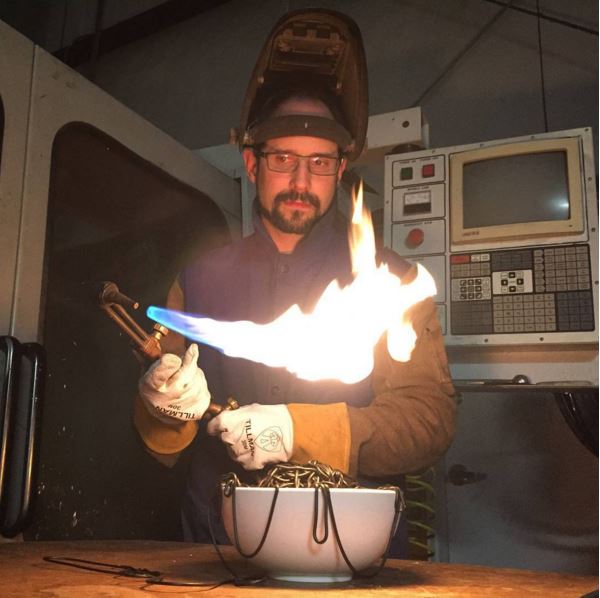
My biggest critique of plastic laser sintering technology is the lack of material choice and access. HP is taking a small, yet long-awaited step forward by offering a material development kit. This encourages material innovation separate from machine manufacturers; however it’s clearly limited to an exclusive group of only the large chemical manufacturers with its $25k price point and proposed material consumption for testing alone. This opens up some opportunity for innovation though is a conservative, incremental step rather than an industry-disrupting leap.
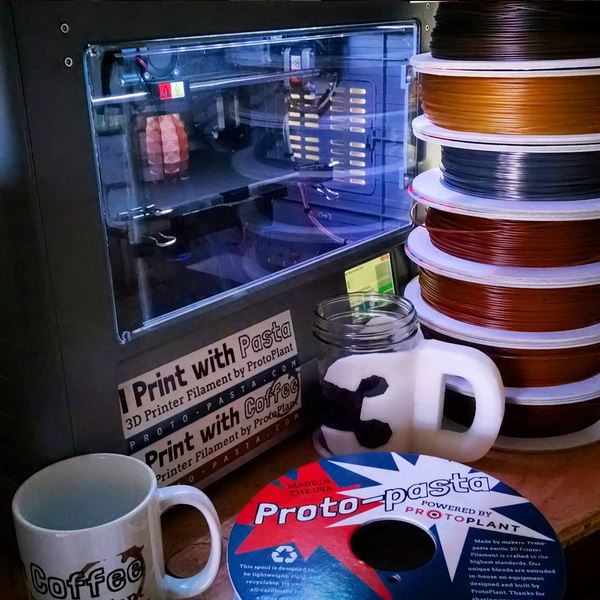
A perfect 3D printing opportunity
Great leaps come from improved access to technology and access is what’s so special about FFF. While working in an R&D lab on the latest, industrial additive manufacturing equipment, I was drawn to a little Makerbot Replicator 2 choking on Ninjaflex. Imperfect hardware and material; perfect opportunity.
This idea of creating innovation through access to tools is what Protoplant’s first kickstarter was all about. We created our own extrusion equipment, access to launch our first 3 Proto-pasta materials, starting a trend of performance materials that include HTPLA and composite filaments. With 3 years of hard work, the Protoplant team, including Proto-pasta founders, Brothers Dustin and Aaron Cram, tenaciously evolved our extrusion technique and business to rapidly and effectively release materials with interesting physical and aesthetic characteristics. Protoplant’s Proto-pasta materials are now approaching a fantastic intersection between performance and finish which will blossom over the next 5 years.
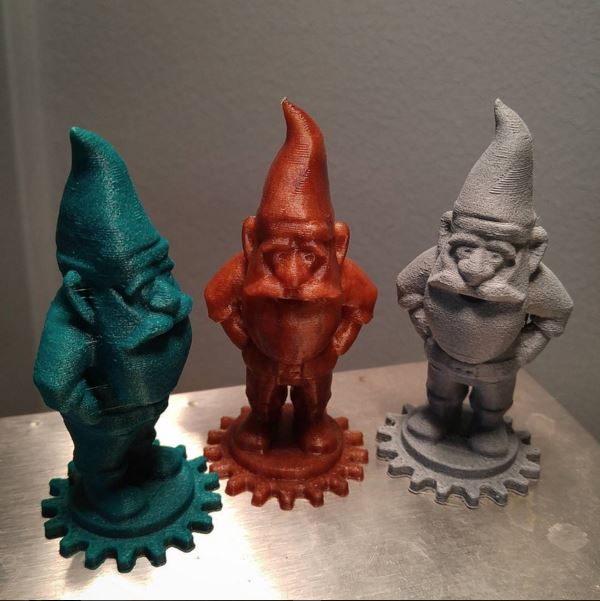
Future trends for 3D printing materials
Future opportunity will certainly evolve, but include more materials, more finishes, and more uses extending and transforming the material palette. We will see increasing demand for material variety as well as the ability to provide innovative materials in both filament and pellet form, supporting direct-from-pellet technology including BAM and desktop extrusion.

By the way, there is a lack of complete, turn-key extrusion systems like Protoplant has built to extrude Proto-pasta. Certainly, improving access to quality extrusion equipment would be a disruptive innovation. The trick is delivering an easy-to-use system with a good value proposition to support user success. Access to extrusion will compliment access to printers and further enable local manufacturing of commodity materials as well as distribute and accelerate innovation and adoption. Protoplant will lead a culture of innovation driving the rapid creation of materials beyond what we alone can realize.
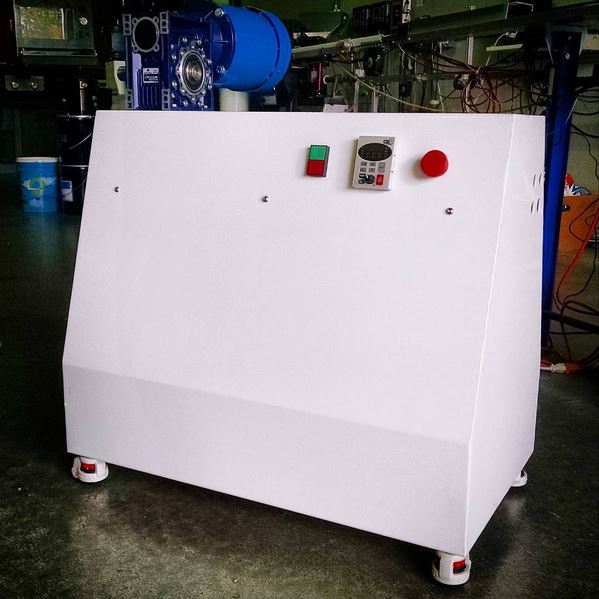
Moving beyond filament
Protoplant’s interest and expertise in machine building, extrusion, and CNC will also be relevant to large scale, productive printing from pellets. Why not leverage our application experience and material creativity to produce end-use parts? Whether creating beautiful, functional parts from filament or pellets, I agree with EOS founder, Dr. Hans Langer, that end-use-parts is the goal. Protoplant certainly doesn’t have the technology portfolio that Dr. Langer has to leverage, but we can feed a broad, established install base with a lower barrier to entry. This low barrier is a double-edged sword as it both encourages greater competition, but also challenges us to keep innovating. It forces us to demonstrate value in feeding what seems to be a bottomless demand for new and interesting materials.
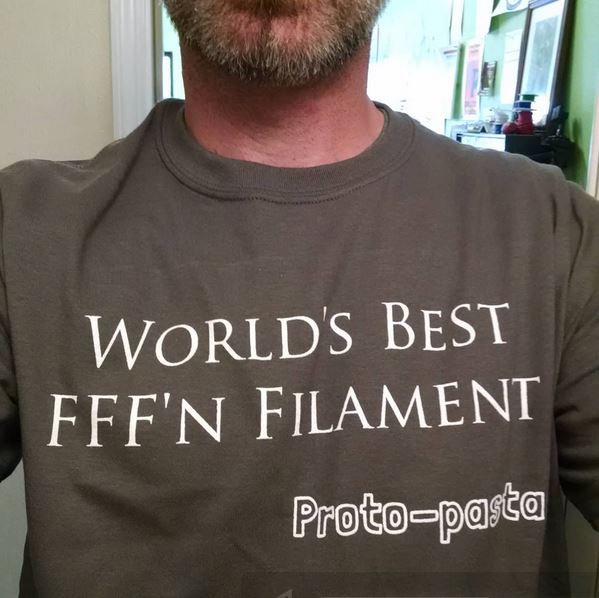
No doubt, the next 5 years will have winners and losers financially, but when you’re in it for the joy of making, it’s hard to imagine being on the losing end. So we march on, making the future!
This is a guest post in our series looking at the future of 3D Printing, if you’d like to participate in this series then contact us for more information. For more insights into the 3D printing industry, sign up to our newsletter and follow our active social media channels.
Don’t forget that you can vote now in the 1st annual 3D Printing Industry Awards.
There is more information about Proto-Pasta here.
Featured image shows the team behind Proto-pasta. Photo via Protoplant.



